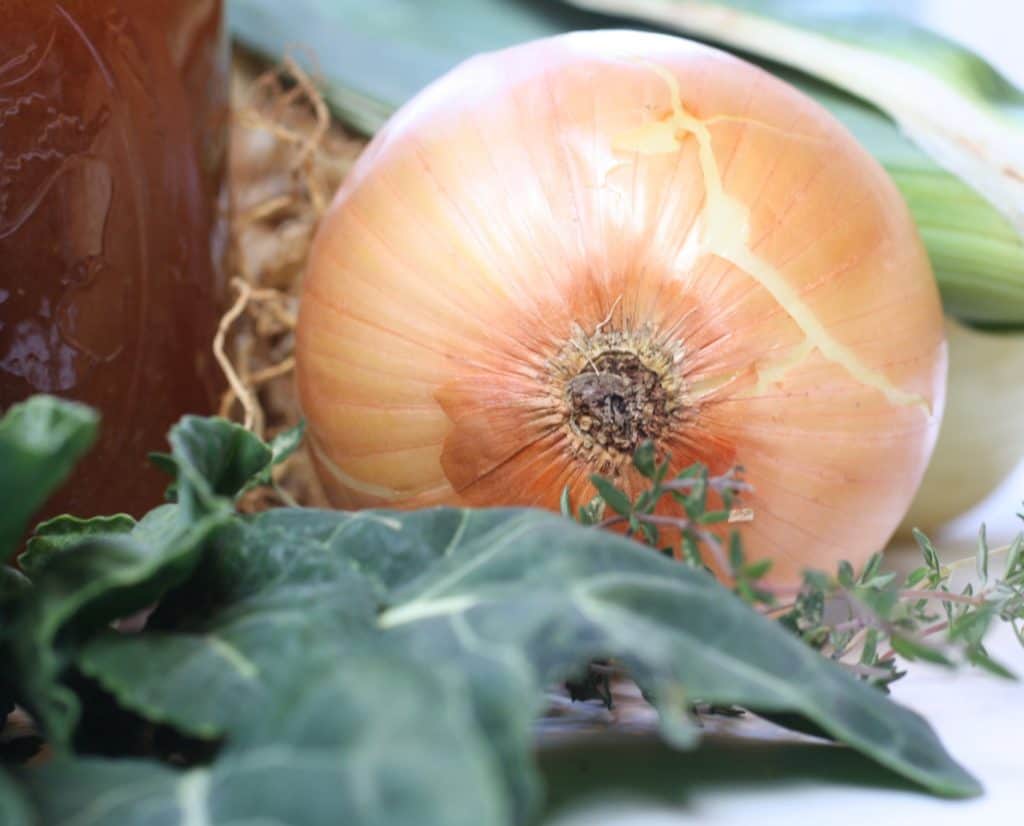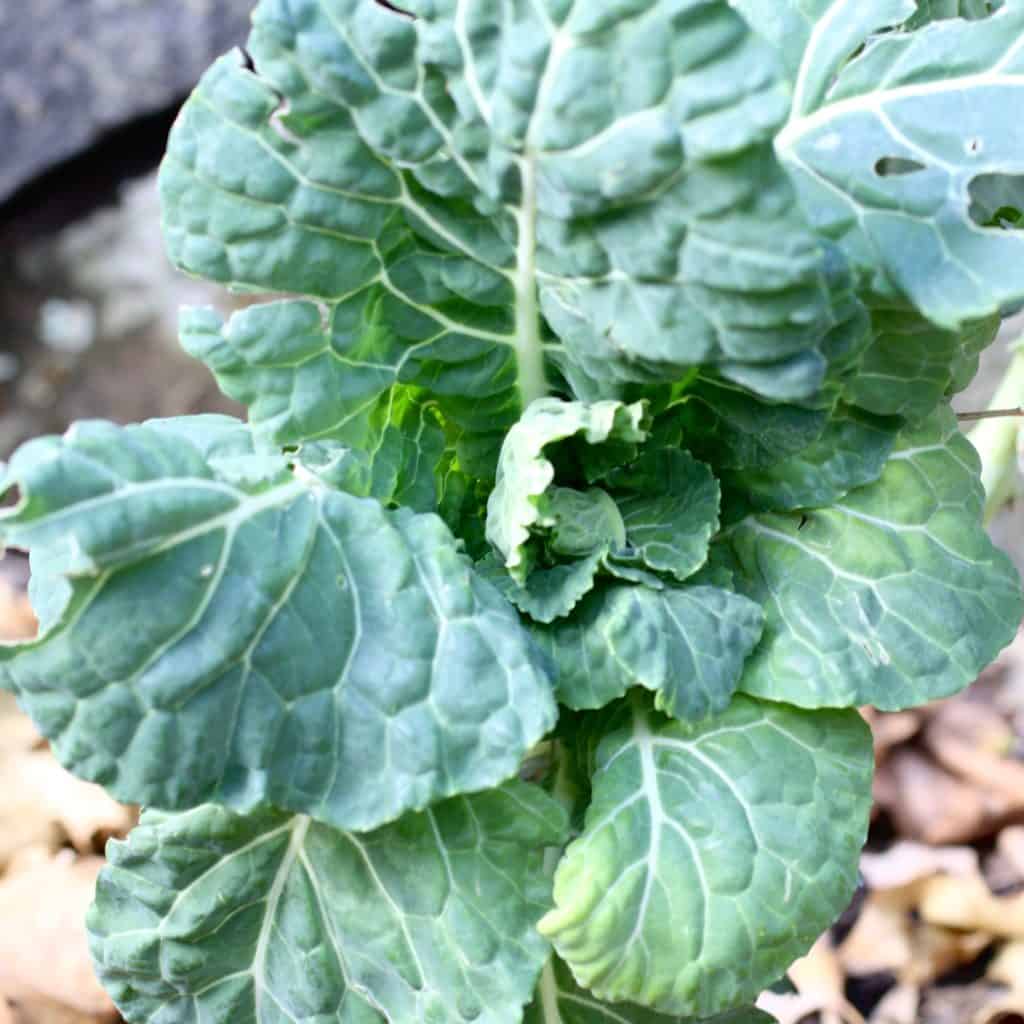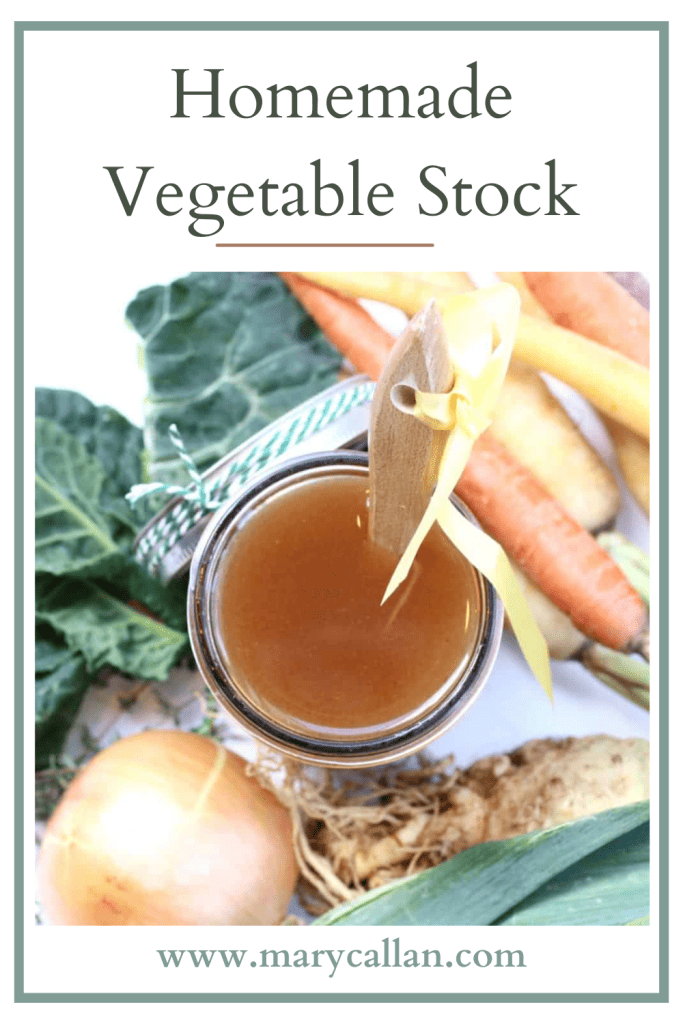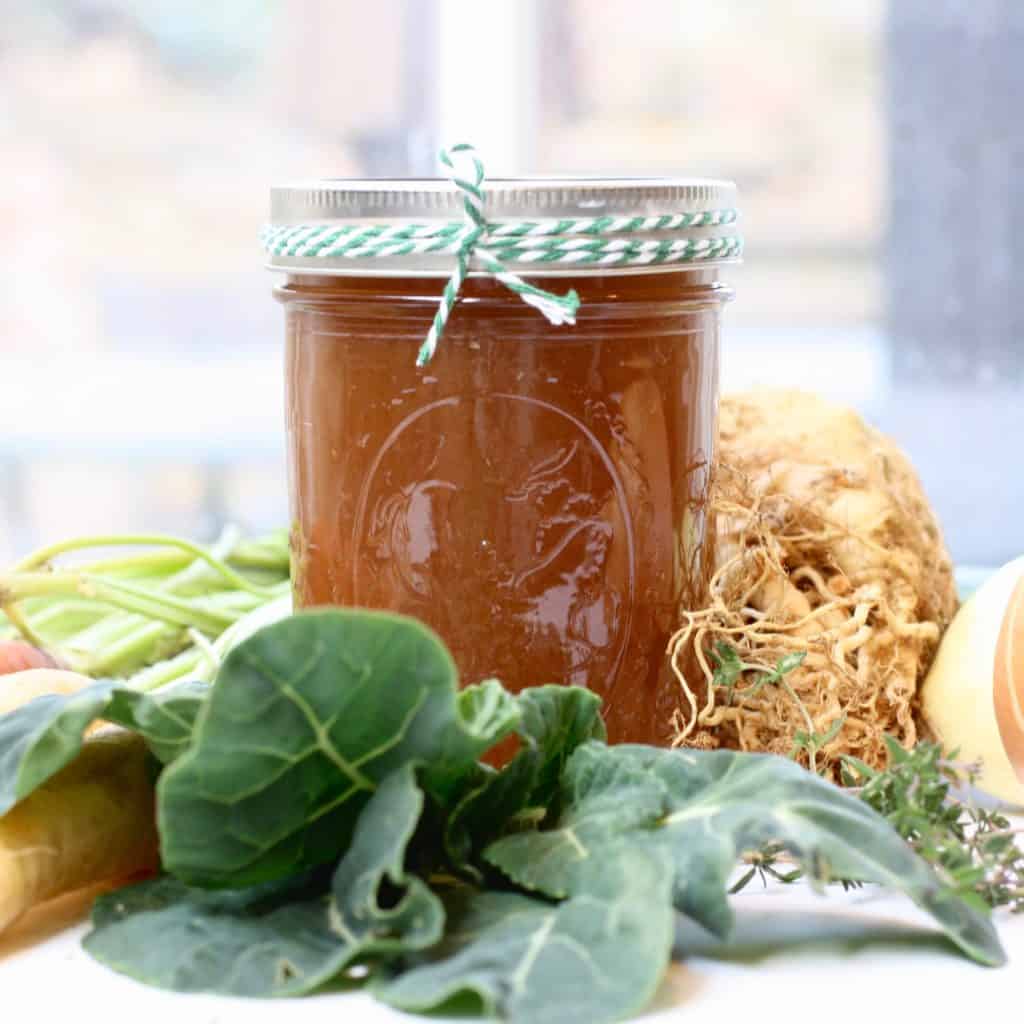
It’s January, it’s freezing so naturally we make soup. Gallons of it. Which means we make some Easy and Delicious Homemade Vegetable Stock. Naturally. So, so much better than the store-bought variety. The real thing transforms an everyday soup into a thing of wonder. I know that’s quite a statement but it does make a HUGE difference.
I always thought I didn’t have time to make stock, but once I got started there was nothing to it. Do give it a try, especially if you plan on making soup anytime soon.
Many people tell you to use your vegetable peelings and leftovers but I think you get a very superior stock by using actual vegetables, not the carrot peelings. Use whatever veggies you have on hand but bear in mind the taste will vary. If you can’t stand turnips (guilty) don’t use them and probably best not to use red beets unless you plan on making borsch. I’ll provide a blueprint and you experiment.
Homemade Vegetable Stock freezes beautifully for up to three months.


What equipment do you need to make Homemade Vegetable Stock?
Why we love Homemade Vegetable Stock
- Nutrient Content: When you make vegetable stock at home, you have control over the ingredients, ensuring a variety of nutrient-rich vegetables are included. Vegetables are a great source of vitamins, minerals, and antioxidants that contribute to overall health.
- Low in Calories and Fat: Homemade vegetable stock is generally low in calories and fat, making it a healthy option for those looking to manage their weight or reduce their intake of certain dietary components.
- Hydration: Vegetable stock is a liquid, so it contributes to your overall fluid intake, helping to keep you hydrated. Adequate hydration is essential for various bodily functions, including digestion, nutrient transport, and temperature regulation.
- Digestive Benefits: The vegetables used in homemade stock often include ingredients like carrots, celery, and onions, which can contribute to digestive health. These vegetables contain fiber and other compounds that can support a healthy digestive system.
- Reduced Sodium Content: When you make your own vegetable stock, you have control over the amount of salt added. This allows you to manage your sodium intake, which is important for those watching their blood pressure or trying to reduce overall sodium consumption.
- Customizable: Homemade vegetable stock is versatile and can be customized based on personal preferences and dietary needs. You can choose organic vegetables, add herbs and spices, and adjust the flavor profile to suit your taste.
- No Preservatives or Additives: When you make vegetable stock at home, you can avoid the preservatives and additives that are often found in store-bought stocks. This ensures a more natural and wholesome product.
- Cost-Effective: Making vegetable stock at home can be cost-effective, especially if you use leftover vegetable scraps or parts that might otherwise be discarded. It’s a sustainable way to make use of kitchen scraps and reduce food waste.
- Control over Ingredients: By making your own vegetable stock, you have control over the quality of the ingredients. You can choose fresh, organic vegetables and avoid artificial additives that may be present in some store-bought options.

Easy and Delicious Homemade Vegetable Stock
- Prep Time: 10 minutes
- Cook Time: 40 minutes
- Total Time: 50 minutes
- Yield: 4 servings 1x
- Category: soup
- Method: stove top
- Diet: Vegan
Ingredients
Scale
- 1 onion, peeled and chopped
- 3 carrots, peeled and chopped
- 4 sticks celery peeled and chopped
- 4 cloves garlic, peeled
- 1 celery root (or a large potato such as Yukon Gold) peeled and chopped
- A handful of fresh herbs such as rosemary, thyme, parsley
- A bunch of kale (optional)
- Freshly ground black pepper and sea salt
Instructions
- Place the onion, carrots, garlic, celery and celery root or potato into a large saucepan with a couple of tablespoons of water and water saute for approximately 5 minutes.
- Add the herbs and kale if using, sprinkle over the salt and pepper, and add 4 cups of water.
- Bring to a boil, turn down to a simmer, and partially cover.
- Allow to simmer for approximately 30-40 minutes or until the liquid turns a golden color.
- Remove from heat. strain reserving the liquid. Use immediately or place in the fridge for up to 5 days or freeze.
Don’t forget to Pin Easy and Delicious Homemade Vegetable Stock!

If you enjoyed Easy and Delicious Homemade Vegetable Stock, you’ll love these!
Wild Rice and Mushroom Soup

Italian Wedding Soup



